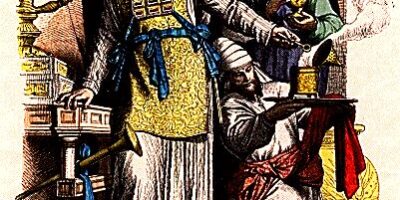Torah: Tetzaveh (Exodus 27:20-30:10) Maftir and Haftarah of Shabbat Zachor:
(Deuteronomy 25:17-19;I Samuel 15:1-34)
The additional portion, read on the Sabbath before Purim (Shabbt Zachor), deals with the injunction to remember (zachor) the horrendous attack of Amalek upon the Israelites. Its connection to Purim is related to the fact that Haman was related to the Amalekites, who were the archenemies of Israel. While the Haftarah (concluding portion of the Torah service) of the Sabbath of Remembrance deals with Amalek’s aggression against Israel during the time of King Saul. The prophet Samuel tells Saul to retaliate against Amalek for all the cruelties perpetrated upon the Israelites. According to tradition, Haman, who wished to destroy the Jews of Persia, was a descendant of Amalek. Hence, the special reading on the Sabbath before Purim.
The Torah portion continues the description of the Tabernacle begun in the preceding portion. It includes commandments to create a ner tamid (eternal lamp) above the sanctuary ark. Aaron and his sons are appointed priests to manage the sacrifices offered in the sanctuary. A description of the priestly clothing, including the ephod, breastplate, robe, fringe tunic, headdress, and sash. Aaron’s ceremony of ordination as a priest, along with instructions for the slaughtering of offerings. The portion concludes with directions for building an altar for burning incense before the ark.
The Priestly dress of Aaron and his sons. According to this week’s Torah portion, the priests were to dress in uniquely designed and decorated clothing, Aaron himself is commanded to wear eight different garments: the ephod, breastplate of judgment, Urim and Thummim, blue robe, fringed tunic, embroidered sash, linen headdress, and gold plate over the headdress. Since priests were set apart from the rest of the Israelites by special duties, it seems logical that their clothing should call attention to their unique work and holy role. Throughout human history, uniforms have been used to signify status or special skills.
In an earlier Torah portion G-d designated the Jewish people as a kingdom of priests in the House of G-d. So all Jews must look upon themselves as priests of G-d. Jews today, should remember to fashion their behavior’s to do righteous actions as befitting of G-d’s image within each of us.
Shabbat Shalom,
Rabbi Helene Ainbinder





